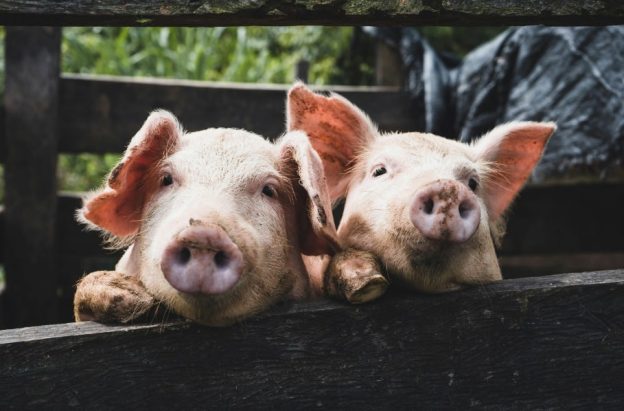Mycotoxins in animal feed pose a major threat to productivity and health. Despite being invisible, these compounds can cause trouble within many organ systems. They diminish kidney and liver function, average daily gain, feed intake, immune response, and fertility.
A recent publication made use of a practice of meta-analysis with meta-regression. It did so to explore the negative effects of mycotoxin challenges in growing pigs. It closely inspected the use of yeast cell wall extract (YCWE) to minimise said challenges. We want to have a closer look here to see the impact on health and wellbeing.
What are meta-analysis and meta-regression?
Let’s start by talking about the two practices. A meta-analysis is a statistical practice researchers use to merge and examine results from many independent studies on a certain topic. This offers us a more reliable and comprehensive overview of the evidence. The procedure consists of data extraction, interpretation of results, and statistical analysis. Also there are literature reviews, and the use of exclusion and inclusion criteria.
Meta-analyses are especially handy when separate studies might have their limits. You can also use them when the situation calls for more robust understanding of the topic.
Meta-regression is a procedure frequently used in meta-analysis. It quantifies and explores relationships between study attributes and the examined effects over a set of studies. This aids you in identifying variability sources. What’s more, you can figure out if specific factors can affect the overall treatment effects.
Pigs are sensitive to mycotoxins
Pigs are among the most sensitive animals in relation to how mycotoxins impact productivity, development, and health. The concentration and variety of these toxins in the feed, together with the production phase and age of the pig, determine how badly the affect will be. Young pigs along with breeding boars/sows tend to be the most vulnerable. So, you need to be especially careful when choosing animal feed.
Types
Common mycotoxins that affect pigs include aflatoxins. They’re produced by Aspergillus fungi and can harm the liver. Additionally, they can suppress the immune system and increase vulnerability to disease. Other problems include lower growth rates and compromised reproductive performance.
Another mycotoxin is deoxynivalenol. This mainly affects the gastrointestinal tract. Pigs exposed to it can experience impaired nutrient absorption and diarrhoea. Other problems include vomiting and lower feed intake. Chronic exposure causes poor growth performance.
Next on the list is Zearalenone. It has a reputation as the mycotoxin that results in the most harm. It disrupts the pig’s reproductive function. Also, it is able to induce reddening and swelling of the vulva, causing false heats and pregnancies. When pregnancy does happen, there are more stillbirths and abortions.
Ochratoxins are notable because they impair kidney functions. Chronic exposure can cause kidney damage and lower growth rates.
Fumonisins are linked to a multitude of health problems. This includes kidney and liver damage. What’s more, they’ve been known to increase the dangers of diseases like porcine reproductive and respiratory syndrome. At the same time, it lowers resistance against pathogens like E.coli.
Last up is T2-HT2 toxins. These exist in the trichothecene group of mycotoxins generated by specific species of Fusarium fungi. They affect health when present in animal feed too.
A correlation
The publication’s meta-analysis revealed a major correlation between lower performance in growing pigs and mycotoxin exposure. Even when the levels were beneath US/EU regulatory guidelines, the average daily gain (ADG) reduced by 79 grams. When one mycotoxin surpasses regulatory limits, the ADG loss goes up to 85 grams. This also produces a large reduction in average daily feed intake (ADFI), at 166 grams.
Using YCWE
Inspection of a summary of results from 30 separate treatments was very revealing. One key finding was that yeast cell wall extract (YCWE) when there are mycotoxin obstacles can boost ADG. Pigs fed YCWE when there are challenges below regulatory guidelines showed a far higher ADG, by 48 grams. This was in comparison to those only consuming mycotoxins. Even with greater challenge levels, if you include YCWE, there was a tendency for an increase in ADFI and ADG. So, it is better for growth.
Understanding the possible impact mycotoxins have on pig performance is essential. For pig producers, this meta-analysis has major implications. It shows that even when the toxins fall under regulatory guidelines, there is a recognisable reduction in growth performance. This gives us actionable insights to protect and amplify animal performance and health by using solutions like YCWE.
Always choose quality animal feed
At JS Hubbuck Ltd, we advise clients to be very careful when choosing feeds. It is a good idea to select ones where you know they won’t contain potentially harmful things. In addition, you need to handle and manage them properly.
To help, we offer some reliable, high quality animal feed products. So if you’d like to know more, feel free to talk to us.

